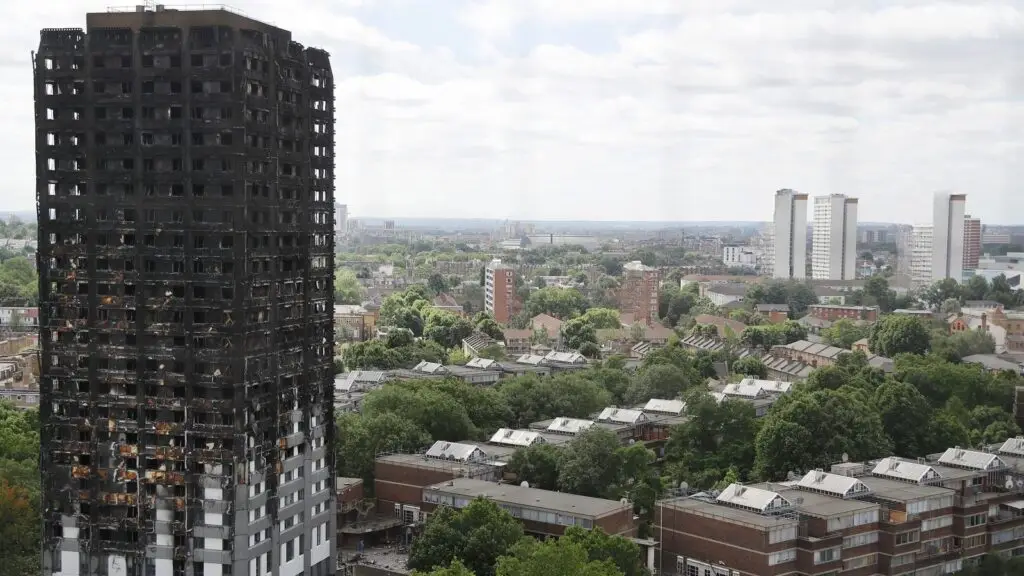The Grenfell Tower fire of 2017 remains one of the most devastating tragedies in recent UK history, with 72 lives lost. The inquiry led by Sir Martin Moore-Bick has released its final report, identifying key failings.
The comprehensive report highlights systemic issues, pointing to incompetence, dishonesty, and greed among various companies and organisations. These critical findings lay bare the culpability of multiple entities involved in the tragedy.
Arconic
Arconic Architectural Products SAS (AAP), a subsidiary of Arconic, produced the ‘Reynobond 55 PE’ rainscreen panels used on Grenfell Tower’s external walls. These panels were composed of two thin aluminium sheets with a highly flammable polyethene core.
In its defence, AAP stated, “We reject any claim that AAP sold an unsafe product. AAP did not conceal information from or mislead any certification body, customer, or the public.” The company insists that the product was safe for use as a building material and legal to sell in the UK. AAP has also contributed financially to settlements and the restorative justice fund.
Kingspan
Kingspan provided the insulation for approximately 5% of Grenfell Tower, using ‘K15’ insulation boards made of combustible materials. The company asserts that the insulation was installed incorrectly.
Kingspan stated that the report “explains clearly and unambiguously that the type of insulation (whether combustible or non-combustible) was immaterial, and that the principal reason for the fire spread was the PE ACM cladding, which was not made by Kingspan.” The company acknowledged historical failings within its UK insulation business but emphasised that these were not causative of the tragedy.
Kingspan has taken steps to address these issues and has acknowledged its failings from the past.
Celotex
Celotex was responsible for most of the insulation used behind the panels on Grenfell Tower. Their product, ‘RS5000’, was marketed as safe despite not meeting that criterion.
Following the fire, Celotex removed ‘RS5000’ from the market. The company reviewed its processes and disclosed results promptly to stakeholders, including the Grenfell Tower Inquiry.
Celotex expressed its sympathies to everyone affected by the fire, stating, “We reiterate our sympathies to everyone affected by the fire.” The company has cooperated fully with all official investigations into the incident.
Royal Borough of Kensington and Chelsea
The Royal Borough of Kensington and Chelsea owns Grenfell Tower and had handed over its management to the Kensington and Chelsea Tenant Management Organisation (KCTMO) in 1996. The council’s leader, Elizabeth Campbell, issued an unreserved apology for the council’s failure to listen to residents and protect them.
Campbell stated, “We fully accept the findings, which are a withering critique of a system broken from top to bottom.” She emphasised that profits were prioritised over people, and clear warning signs were ignored.
Kensington and Chelsea Tenant Management Organisation (KCTMO)
The KCTMO managed nearly 10,000 properties, including Grenfell Tower. The Royal Borough of Kensington & Chelsea terminated its contract with KCTMO following the disaster.
Sir Martin described the organisation as “badly run” and criticised its failure to address residents’ concerns. In response, KCTMO acknowledged its contribution to the tragedy and offered its deepest condolences. The organisation also relinquished its role as a housing provider in February 2018.
Harley Facades
Harley Facades was responsible for installing the cladding during Grenfell Tower’s refurbishment. The company attributed the fire to the manufacturers of the cladding and insulation products.
The Inquiry Panel, however, found that Harley Facades did not adequately consider fire safety during the refurbishment. The company has been contacted for a response but has not yet provided one.
Rydon
Rydon was the lead contractor for the refurbishment of Grenfell Tower. The company blamed “dishonesty” from Arconic, Celotex, and Kingspan for the disaster. The report noted Rydon’s lack of knowledge and experience concerning fire safety.
Rydon has not issued a statement in response to the report’s findings.
Studio E
Studio E was the architectural firm responsible for designing the refurbishment of Grenfell Tower. The firm, which went bust in 2020, was criticised for its casual approach to contractual relations and failure to identify fire safety responsibilities.
Studio E has not responded to requests for comment.
Building Research Establishment (BRE)
BRE, a former UK government laboratory privatised in 1997, conducted tests and issued certificates for cladding products. The organisation has stated it will review the report’s recommendations and continue to work with the government.
British Board of Agrément (BBA)
The BBA issued certificates on the performance of the cladding and insulation used at Grenfell Tower. The organisation acknowledged that the tragedy led to a comprehensive review of safety in the UK construction industry and pledged to continue engaging proactively in safety reforms.
Local Authority Building Control (LABC)
LABC was a certification body responsible for approving some of the building materials used in Grenfell Tower. The organisation admitted errors early on and apologised repeatedly, stating it would take the Inquiry’s conclusions seriously and continue reforms within its processes.
The Grenfell Inquiry has unveiled a chain of failures involving various companies and organisations, each playing a significant role in the disaster. The revelations point to a broader systemic issue within the construction and safety industry.
Moving forward, the findings should serve as a catalyst for change, ensuring such a tragic event does not recur. Accountability and reform are paramount to the future safety of residential buildings.

